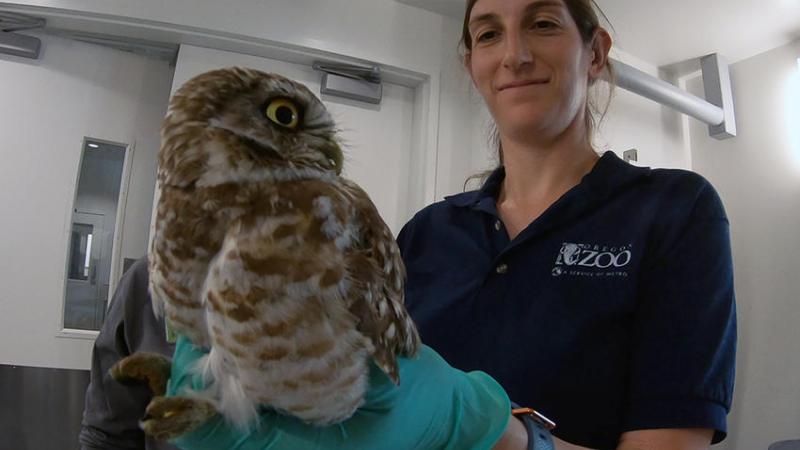
Oregon Zoo: What is a typical day at work like for you?
Kelly Flaminio: Every day is different, which is one of my favorite parts of my job. I could be doing any number of things — from radiographing a fish, to examining Hottentot teals (small ducks), to helping keepers determine the correct amount of meat for our growing wild dog pups.
What is the biggest misconception about your work?
The most common question I get asked is “What animals do you specialize in?” The answer is: All of them! From insects to elephants, I take care of all the animals that call the Oregon Zoo home.
What inspired you to choose zoo veterinary medicine?
I have always been fascinated by the natural world and passionate about conserving it. When I was young, I dreamed of going on safari or trudging through the rainforest. My favorite subjects in school were always biology and physiology. Throughout my life, zoos had a strong impact on me, helping to educate me about animals I dreamed of seeing in the wild. Later in my education, I still felt passionate about zoos. I wanted to commit my work to ensuring the animals had the best life possible so they could inspire other people in my community like they had always inspired me.
What has been your most exciting moment on the job?
Sometimes animals have a rough start to life and need intervention from very early on. This can happen for a variety of reasons, but it tends to be very intensive because baby animals are so delicate and require specialized care. I have worked with multiple young animals that needed extra help in their start to life. Nothing is more rewarding than seeing an animal that you nursed back to health as a neonate take its first romp around their new exhibit, fly using their wings for the first time, or take their first swim. Zuberi, a southern ground hornbill, now flies in the Wildlife Live show; Kali, a Rodrigues flying fox, lives in the African Rainforest area; Bashi, a Speke’s gazelle, romps around with his giraffe friends; and, Flora and Hobs, the river otters — it was thrilling when they took their first swim with Tilly.
Recently, Oregon Zoo Foundation donors helped purchase equipment for the Veterinary Medical Center, including a CT scanner. What effect has this had on your work?
The CT scanner is a great new addition to our diagnostic abilities at the zoo. It allows us to do advanced imaging on site, rather than traveling with animals to other hospitals (increasing anesthesia time and potential stress). The CT scanner is yet another tool to keep our animals healthy, and it has provided invaluable information, especially in treating western pond turtles with shell disease. I feel very lucky to work at one of the few zoo hospitals where this technology is available.
What do you do for fun when you’re not tending to the needs of animals at the zoo?
I have always loved sports and being active. In the summer, I’m usually on my bike or swimming in the river, getting ready for my next triathlon race.
More News

Zoo seeks pika watchers for summer season
The Oregon Zoo is recruiting volunteers for Cascades Pika Watch.April 15, 2025

Zoo convenes action for imperiled elephants
Sabah government representatives joined conservation NGOs, local communities, palm oil producers, and tourism operators this week in the fight to save the world’s smallest elephants from extinction.April 11, 2025

Double fluff: Zoo welcomes first condor chicks of season
The first two California condor chicks of 2025 hatched at the Oregon Zoo’s Jonsson Center for Wildlife Conservation.April 3, 2025

